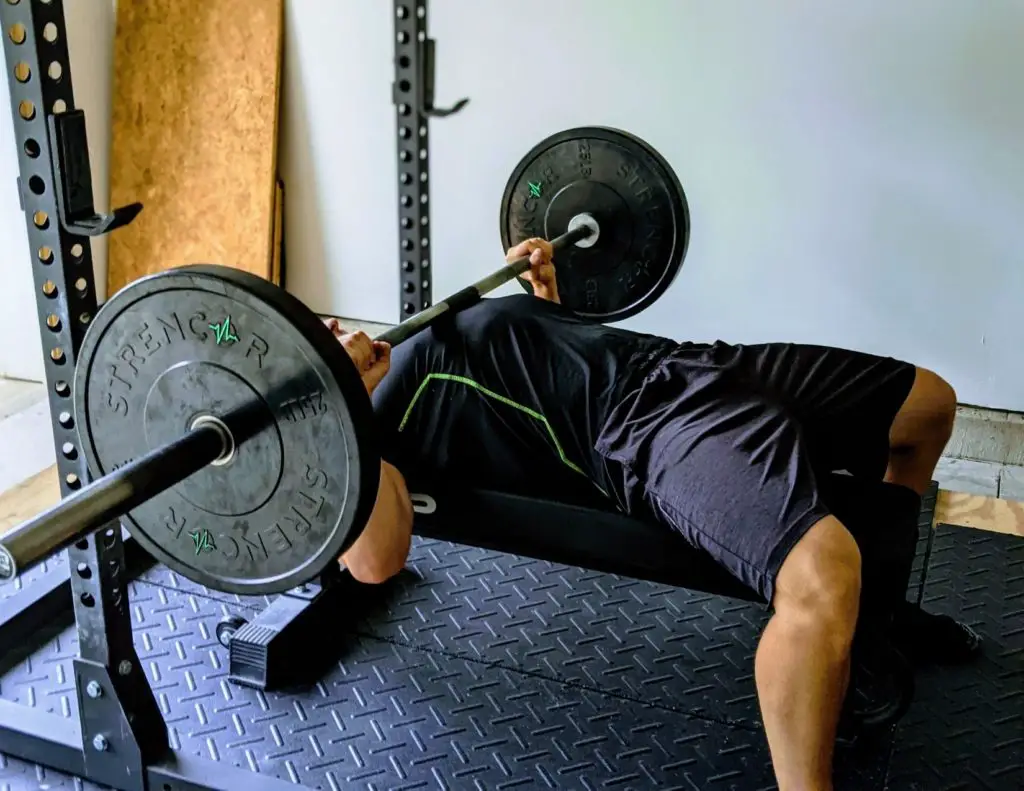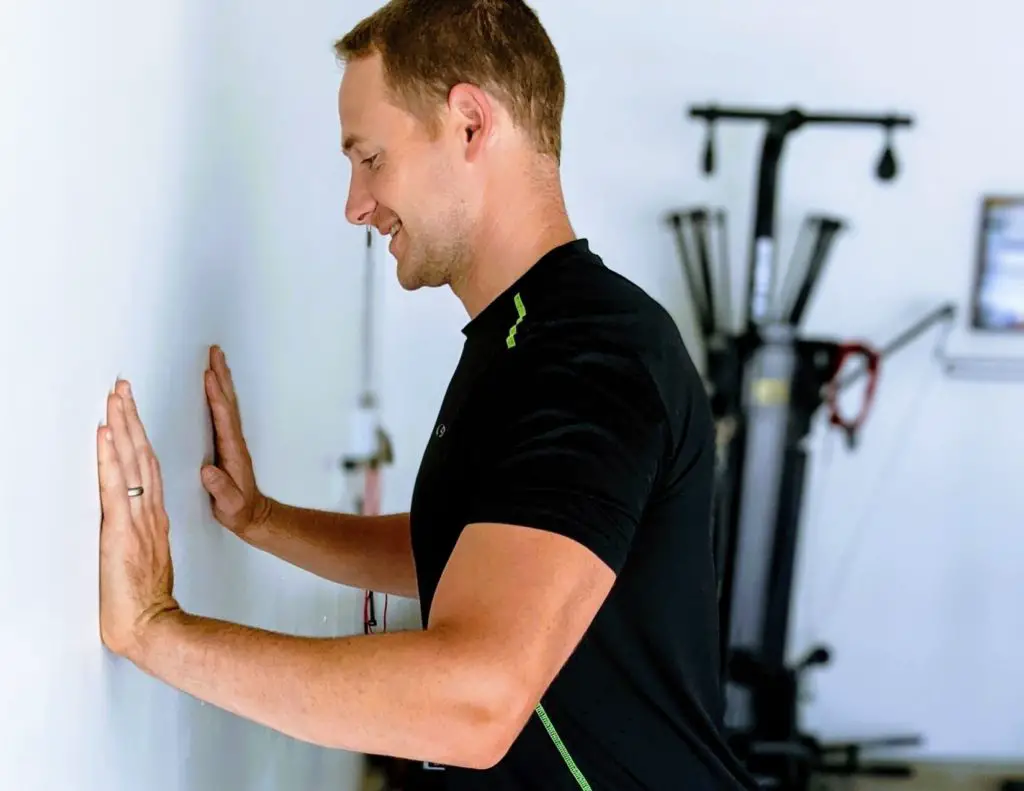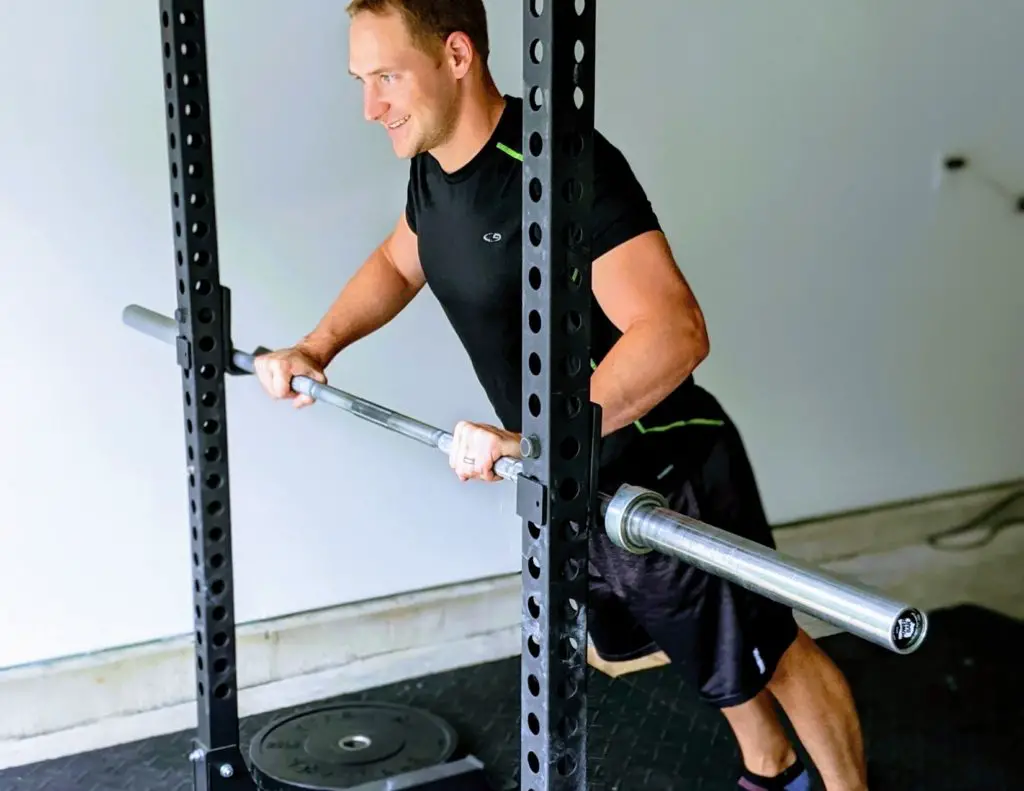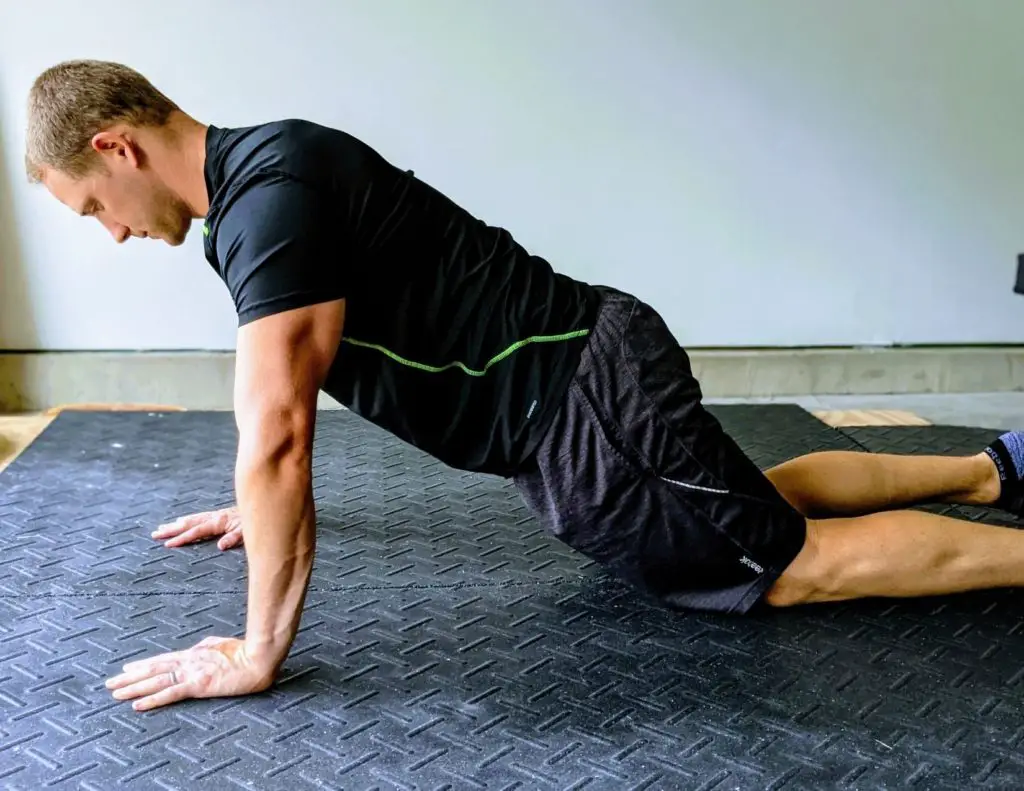Rotator cuff injuries are like a box of chocolates…you never know what you’re going to get. Each injury is different.
Before we dive into the worst exercises for rotator cuff injury, you should know these 3 rotator cuff facts:
- It’s normal to have a partial tear in your rotator cuff and not even know it. Most rotator cuff tears do not cause pain! (1)
- Rotator cuff tears respond similarly to conservative treatment vs. shoulder surgery (2)
- A massive rotator cuff tear may require surgical intervention
The rotator cuff muscles stabilize the glenohumeral joint, a ball and socket joint that looks like a golf ball on a tee.

Several exercises consistently irritate the rotator cuff and worsen shoulder pain. However, each shoulder issue is unique. It’s crucial to monitor your own symptoms and understand which exercises make your shoulder hurt. Then, modify or avoid painful exercises.
These 7 shoulder exercises can exacerbate rotator cuff problems and lead to further injury.
Upright Row
The upright row targets the deltoid muscles. Unfortunately, it puts the shoulder joint into loaded internal rotation, a classic shoulder impingement position.

Shoulder impingement occurs when the head of the humerus (upper arm bone) compresses the rotator cuff tendons under the acromion, in the subacromial space.

Dealing with shoulder impingement? Check out the article below for shoulder strengthening exercises to fast-track your recovery.
Read More: How to Relieve Shoulder Impingement
Instead: In lieu of upright rows, perform face pulls with a rope attachment or light resistance band. Keep your pinkies forward (palms facing inward) to put the shoulder joints in a comfortable, externally rotated position.

Behind-the-Neck Overhead Press
This exercise places the shoulders in extreme horizontal abduction and external rotation, a bad combination for achy shoulders.

Plus, it puts a lot of strain on the neck. And there’s little benefit from doing this exercise instead of normal overhead presses.
Instead: Perform standing overhead presses with a barbell or dumbbells. These variations place less strain on the shoulders and beef up the shoulder muscles just as effectively.
In some cases, rotator cuff injuries won’t tolerate overhead movements. Know your limits.
Behind-the-Neck Pull Down
Are you seeing a theme yet? Behind-the-neck exercises aren’t worth the neck and shoulder strain for most folks with pre-existing shoulder and neck problems.

Instead: Do regular lat pull-downs, touching the bar to your chest on each repetition.

For irritable shoulder pain, opt for the v-bar attachment. This accessory allows you to perform pull downs with the palms facing inward, which is a comfortable, neutral position for the shoulder joints.
Shoulder Fly
Also known as a lateral raise, this exercise is likely to irritate the rotator cuff if 1) it’s performed too high, with the hands going above shoulder level, or 2) the thumbs point downward, placing the shoulders in an internally rotated (impingement) position.

Instead: Do the same exercise, just use less weight, less range of motion, or keep the thumbs up throughout the movement.
Triceps Dips
Also called bench dips, this exercise internally rotates and extends the ball-and-socket (glenohumeral) shoulder joint. This position creates a lot of stress on the anterior shoulder structures, including the long head of the biceps, subscapularis muscle, and anterior shoulder capsule.

Instead: Perform skull crushers (lying triceps extensions) with the palms facing inward. This exercise blasts the triceps while keeping the shoulders in a neutral, mid-range position.

Elbow-Out Lawnmower Row
Popularized by the legendary P90X program, this row variation puts the shoulder close to an impingement position. It also encourages sub-optimal “pulling” motor patterns.

Instead: Opt for an elbow-in lawnmower row. For maximal comfort, scrape the ribcage with the upper arm, keeping the elbow close to the side. Use this technique with pulling activities like opening doors, starting the lawnmower, and lifting groceries from the car trunk.
Be sure to retract your scapula (pull your shoulder blade down and back) to target the rhomboids and trapezius muscles.
Kipping Pull-ups
There’s a lot to love about CrossFit: Social support, high intensity, competition, and barbell lifts. But not kipping pull-ups.

Kipping pull-ups encourage speed, momentum, and quantity of repetitions. Unless you know what you’re doing, kipping pull-ups create significant traction forces on the shoulders, forces known to cause labrum tears and rotator cuff injuries.
Instead: Focus on controlled, high-quality strict pull-ups. Until you master strict pull-ups, kipping pull-ups are a bad idea for sore shoulders.

Bench Press
I debated whether to include bench press on this list. It can be a great exercise for people with rotator cuff pain…or a terrible exercise. Heavy lifting isn’t 100% contraindicated for shoulder issues, but doing too much of the wrong exercise will make shoulder pain worse.

Performing the bench press with poor technique puts a lot of stress in the front of the shoulder and contributes to rotator cuff pain. On the flip side, bench pressing with excellent technique builds a strong chest and protects the upper body from injury.
Research (3) shows that strength training is the best way to prevent injury. Not stretching.
Try these 3 keys to improve your bench press technique:
1) Set Up Tight
To keep the shoulders happy, it’s essential to position the shoulder blades correctly on the bench. Most lifters flop down on the bench with little regard for their upper back or shoulder blade position.
Here’s how to do it right: Retract the shoulder blades, squeezing them together and down before grabbing the barbell. Maintain this position throughout the lift. Shoulder blade retraction shortens the range of motion and protects the shoulders.
2) Optimize Your Grip
Finding the right grip width will make or break your bench press. Most lifters grip the bar too narrow, which increases the range of motion to get the bar to the chest. A narrow grip also increases the shoulder extension motion during the lift.
On the other hand, gripping too wide will keep the shoulder abduction angle near 90° (between the torso and upper arm), which increases stress on the shoulder.
A good rule of thumb is that the forearms should be vertical when the bar is touching the chest, when viewed from in front or behind the lifter. In other words, the wrists are directly above the elbows.
3) Listen to Your Shoulders
This key applies to every single exercise. If your shoulders feel worse during or after the exercise, it’s a good idea to stop.
Talk with a physical therapist about your lifting program. Rotator cuff issues won’t go away if your workouts keep your shoulder flared up.
For more bench press insights, check out 10 Tips to Bench Press Without Shoulder Pain
Can I Do Push-ups with a Rotator Cuff Injury?
It depends. For some people with shoulder pain, push-ups feel great and build upper body strength. For others, push-ups cause pain…or created the shoulder problems in the first place.
Solid push-up technique keeps achy shoulders happy. The shoulders feel more comfortable with the elbows closer to the body.
A 45° angle between the torso and the upper arm is perfectly acceptable. Experiment with hand position and stick with the hand width that’s most comfortable for you.
If you’re hesitant to try full push-ups, start with wall push-ups and see how your symptoms respond.

Next, move to counter-top push-ups–or use a barbell as pictured here. Counter-top push-ups are a bit harder than wall push-ups.

As long as your shoulder doesn’t hurt, progress to kneeling push-ups.

Still feeling good? Can you do 30 good reps? If so, you’re ready for the real thing!
As with any exercise, it’s important to ease back into your normal push-up routine. If you took 4 weeks off from push-ups and normally do 50 per session, it’s a bad idea to knock out 50 consecutive push-ups your first time back.
Start slow, gradually progress, and reduce repetitions if your shoulder gets aggravated.
The Best Treatment
Almost all rotator cuff injuries benefit from conservative treatment like exercise and physical therapy. And conservative treatment outcomes are similar to post-surgical results (4).
If you’re interested in learning more about proven shoulder treatments and strategies to self-manage shoulder pain, check out Treat Your Own Shoulder, a book that’s helped hundreds of people take control of their shoulder pain.
In addition, consider setting up a consult with a physical therapist to gain insights on the best treatments for your specific situation.
A skilled PT will perform a thorough physical examination to determine the cause of your shoulder pain. Then, he or she will guide you to the proper exercises for your situation. Ultimately, working with a PT will accelerate your shoulder’s healing process.
Readers: What exercises exacerbate your shoulder pain? Have you found any exercises that relieve it? Feel free to share your experiences in the comments.
For more evidence-based insights you won’t find anywhere else, join the free Facts & Physio Newsletter. Plus, get The Recovery Checklist when you sign up.


2 thoughts on “7 Exercises to Avoid with Rotator Cuff Injury”
I have pulled my rotator cuff in my left side which has aggrevated my lats underneath. I did this at work as part of my job is picking drinks orders for customers as a wholesaler. Barrels of beer aren’t light especially battling with a 22g. My physio has diagnosed my injury. I have been told that I can’t do boxfit or anything weight bearing. Could you advise what is possible that I could do at yoga. When I can lay on it that is. Or abs/ core work without aggrevating it. Many Thanks, Jane
Jane, sorry to hear about your injury. I’m a big fan of yoga. Lots of benefits like stress relief, flexibility, mindfulness and strength. All these can accelerate recovery. Here are my thoughts on training through pain. For specific advice, check with your physician or physio since they are familiar with your injury.